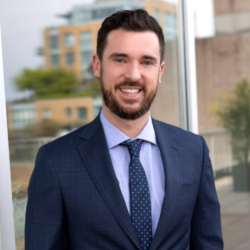Sequence of Returns Risk
Sep 17, 2018
Most investors understand that to achieve their long-term target rate of return, they will need to accept some volatility in the short and medium term. In the table below, we have 3 scenarios with the same annual returns but in differing orders. We can calculate whether the order (or sequence) of these annual returns will have an impact on a $100,000 portfolio invested for all 5 years.
|
Return Scenario |
Year 1 |
Year 2 |
Year 3 |
Year 4 |
Year 5 |
|
A |
18% |
12% |
8% |
-3% |
-6% |
|
B |
12% |
-6% |
18% |
-3% |
8% |
|
C |
-6% |
-3% |
12% |
8% |
18% |
In this situation the sequence of returns is not of consequence and all three scenarios result in an average annual compound return of 5.41% with an ending value of $130,144.
If we build upon this example and include the variable that annual withdrawals of $10,000 are made at the end of each year to provide a retirement income, we can see below how this would change the outcome:
|
Return Scenario |
Year 5 Ending Value |
|
A |
$80,749 |
|
B |
$74,886 |
|
C |
$67,481 |
Although a total of $50,000 ($10,000 x 5 years) is withdrawn in each scenario, the sequence of returns results in differing ending values. This is referred to as sequence of returns risk. In Scenario A, the strong return years occur earlier while the portfolio has a comparatively higher balance.
We can take our example a step further and assume that in addition to the $10,000 annual withdrawals, a $30,000 lump sum is required for an unforeseen expense at the end of the second year.
|
Return Scenario |
Year 5 Ending Value |
|
A |
$51,207 |
|
B |
$37,801 |
|
C |
$24,662 |
In Scenario C, the $30,000 withdrawal occurs after a market downturn and has a significant impact on the ending portfolio value.
There are ways to mitigate sequence of returns risk. A balanced portfolio will enable you to source income from other asset classes following market downturns. Also, having access to an emergency fund will help you avoid tapping into your investments for additional funds during these times. When projecting your retirement income, using a conservative rate of return assumption will also help ensure your portfolio is equipped to weather this type of risk.
Your RGF Integrated Wealth Management advisor will work with you to develop a strategy that is tailored to your unique situation.
Nick Hearne is a Financial Advisor with RGF Integrated Wealth Management . The views expressed are those of the authors, and not necessarily those of RGF Integrated Wealth Management, which makes no representations as to their completeness or accuracy.
©2018 RGF Integrated Wealth Management Ltd. | RGF Wealth Management Ltd., Member - Canadian Investor Protection Fund
Estate Planning Misconceptions
In this 5-minute webinar, we explore an important but often misunderstood area of financial planning.
Learn More



